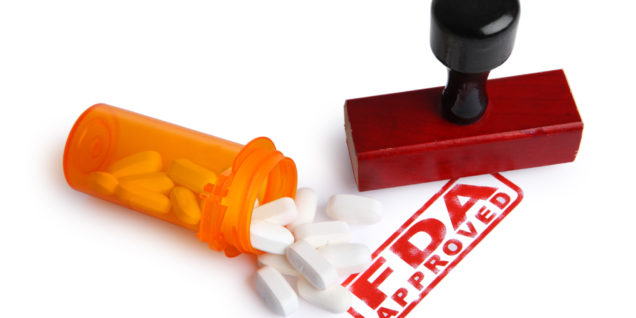Why Big Pharma Lawsuits Probably Won’t Fix Things
By: Lindsey Pasieka
Pharmaceutical companies are sued every single day. There are literally thousands of drug and medical device-related lawsuits going on right now. And they run the gamut, from things like Pradaxa lawsuits, brought on by victims of side effects, to statewide and regional opioid lawsuits, brought on by mayors and state attorneys general. Even government agencies have been known to take Big Pharma to court over violations like dangerous products, and illicit marketing techniques.
So why don’t things change? Why do drug companies continue to hide side effects, market off-label uses and manage to stay out of jail? Well, there’s a few reasons. First, since individual marketers and CEOs are rarely the defendants, the company as a whole has a chance to absorb any penalties- and there are plenty of loopholes to reduce the effects of a guilty verdict. Second, existing laws and regulations favor companies over consumers. And just like with old laws, new laws are hugely influenced by pharmaceutical companies, and more importantly, their money.
They’re Called “Big” for a Reason
One of the biggest pharmaceutical companies in the world is Pfizer. As of 2014, they owned over 500 subsidiaries, and that number is only growing. In 2016, the company has a revenue of $52.8 billion. To put it simply, it is a monster of a company.
That came in handy back in 2005, when the FDA brought an action against the company for its painkiller Bextra. Bextra was approved in 2001 as an alternative to generic options; as a Cox-2 inhibitor, it was supposed to be safer for patients. However, the drug was specifically rejected for approval for post-surgical pain. Despite this, marketers for Bextra deliberately sought out surgeons and marketed the drug for their patients.
Marketing a drug for off-label or unapproved uses is a direct violation of the Food, Drug, and Cosmetic Act (FDCA). So the FDA brought charges against the company. And if Pfizer had taken the hit, the punishment would have meant exclusion from Medicare/Medicaid programs– and an almost guaranteed financial collapse.
But here’s where being big helps out. Instead of being pinned, Pfizer made a deal so that prosecutors charged their subsidiary, Pharmacia & Upjohn Co., Inc. That company went under, and Pfizer was left only with a fine. Again, being big was beneficial. To a small company, a $1.2 billion bill would be crushing; to Pfizer, it was only 2.5% of their revenue at the time.
The Approval Process Favors Them
Many people think the approval process is too long, too full of red tape and that because of this process that new, desirable drugs can’t get to the patients that need them. When you’re on the outside of the process, it’s easy to understand that point of view. On the inside, though, the pitfalls of our process shine through. Most of those pitfalls are because we try to get things to market faster than every other country, and because money plays a role.
Currently, the FDA must respond to any application for drug approval within 10 months. That’s already outpacing most other countries. But did you know that drug companies can pay the FDA to speed up? The FDA actually has several programs like Priority Review and Fast Track, which companies can pay to get into, which shrinks the approval time to as little as 6 months. This doesn’t include the trials they need to complete before applying for approval, but it does make it difficult for the FDA to make a fully informed decision.
Take, for example, Pradaxa. The drug was submitted to a priority process in 2010, and immediately, the problems with the clinical trials became obvious. The RE-LY trial used a broad population, and excluded the older generations and those with medical conditions that would be most likely to experience side effects. A third-party safety group also discovered that the trial wa s not, in fact, a double-blind study. This means that the results pulled from the study are less reliable.
s not, in fact, a double-blind study. This means that the results pulled from the study are less reliable.
Despite these issues, the FDA pushed Pradaxa through. Some would say this backfired. Within 3 months, the FDA received more serious incident reports for Pradaxa than any drug before it. In its first five years on the market, Pradaxa caused over 1,000 deaths. And it’s now the target of an onslaught of lawsuits, led by victims and their families, and it’s received a black box warning for severe bleeding risks.
Yet, on the flip side, Pradaxa is still a leader on the market for blood thinners, and it brings in billions of dollars a year. So if the lawsuit charges don’t make a dent in revenue, the FDA doesn’t take away approval, and individual employees aren’t charged, why should Pradaxa’s maker change their tactics?
They’ve got Money in Washington
If pharmaceutical companies have some money in the FDA, they have whole banks of it in lobbying. In the first quarter of 2017 alone, the pharmaceutical industry spent $78 million in lobbying. Again, this is a drop in the bucket for companies making dozens of billions a year; but to lawmakers it speaks volumes.
Our example here is the ongoing opioid crisis. Most opioid addictions begin in the doctor’s office, with a prescription. When the pill bottles run out, addicts turn to illegal opioids for a high, most often to heroin. It’s a national issue, and it’s even been addressed by President Trump on several occasions, and declared it a Public Health Emergency. Yet law and regulation changes regarding opioids and addiction are slow to come about.
A big reason is because opioids make pharmaceutical companies money. OxyContin is one of the most prescribed opioids on the market. It is used by millions of people a year, and for many, it saves them from severe, debilitating pain. Evidence shows, however, that the 12-hour drug starts to wear off after 9 hours, causing patients to experience withdrawal between doses. As Oxycontin sales quadrupled between 1999 and 2016, opioid overdose deaths rose to over 200,000— and counting.
Still, drug makers stand behind their products, and they expect lawmakers to as well. When laws to limit prescribing behaviors were introduced in the House and Senate, Big Pharma pushed back. They went so far as to fund the Pain Care Forum, a lobbying company that spent upwards of $740 million to curb the legislation, and they continue to lobby every time a new motion is brought forward to fight the epidemic.
What We Can Do
Lawsuits don’t seem to work, the FDA falls short, and Big Pharma has Washington in its pocket. While the outlook seems bleak and none of it will be easy to fix, there are ways to improve the situation. 2018is an election year; get out and vote with consumer safety in mind. Find representatives who promise to combat these issues. If your current reps aren’t following through, hold them accountable by calling or writing in. Donate to lobbyists who represent the people, not just large companies.
You can also ask your doctor if they work with pharma reps. You can ask them to explain their medication choices to you, and bring up your concerns regarding painkillers or other drugs with serious side effects. Use your voice to protect yourself, your family and your neighbors, and together, we can work towards change.
 Lindsey Pasieka is an investigator and writer who focuses on public health and safety issues. Through her work, she has become an avid advocate for consumers, fighting for their right to safe products. In her role as Consumer Rights Investigator for ConsumerSafety.org, she focuses on health and legal topics that are essential to protecting consumers. In her spare time, Lindsey enjoys reading and spending time with her cat, Lava.
Lindsey Pasieka is an investigator and writer who focuses on public health and safety issues. Through her work, she has become an avid advocate for consumers, fighting for their right to safe products. In her role as Consumer Rights Investigator for ConsumerSafety.org, she focuses on health and legal topics that are essential to protecting consumers. In her spare time, Lindsey enjoys reading and spending time with her cat, Lava.


